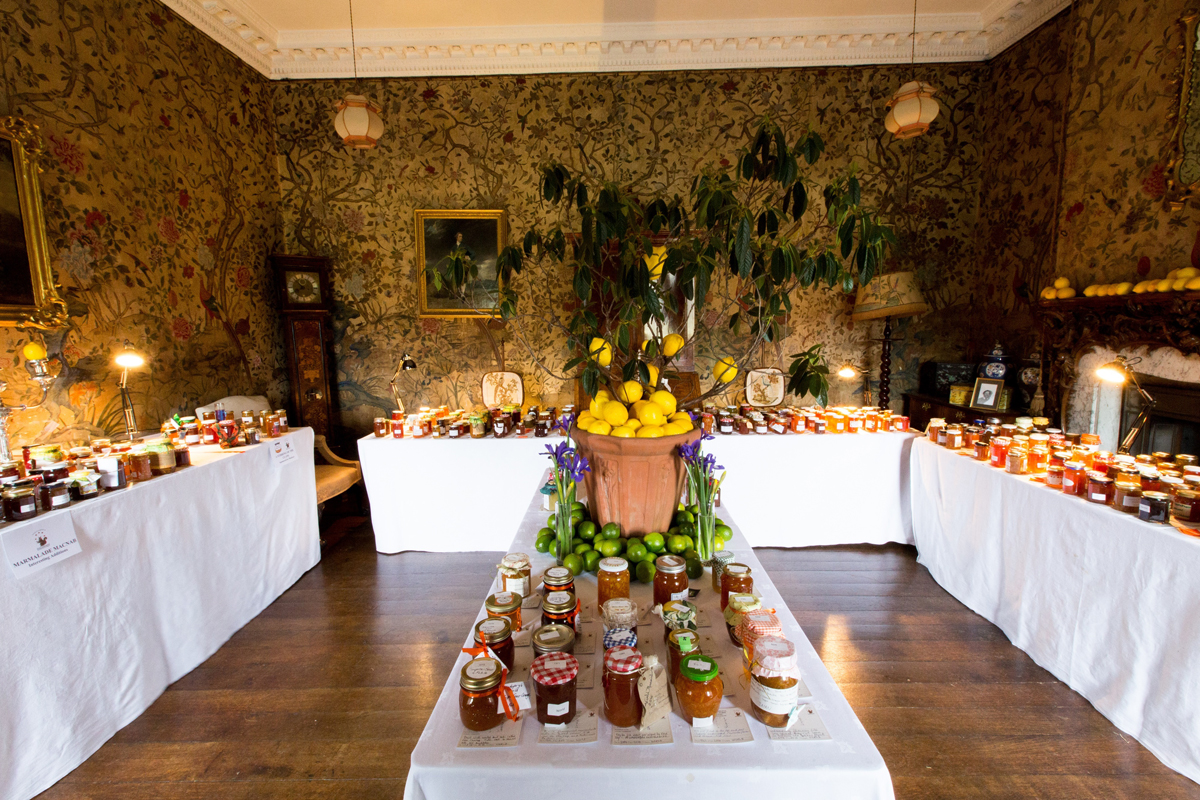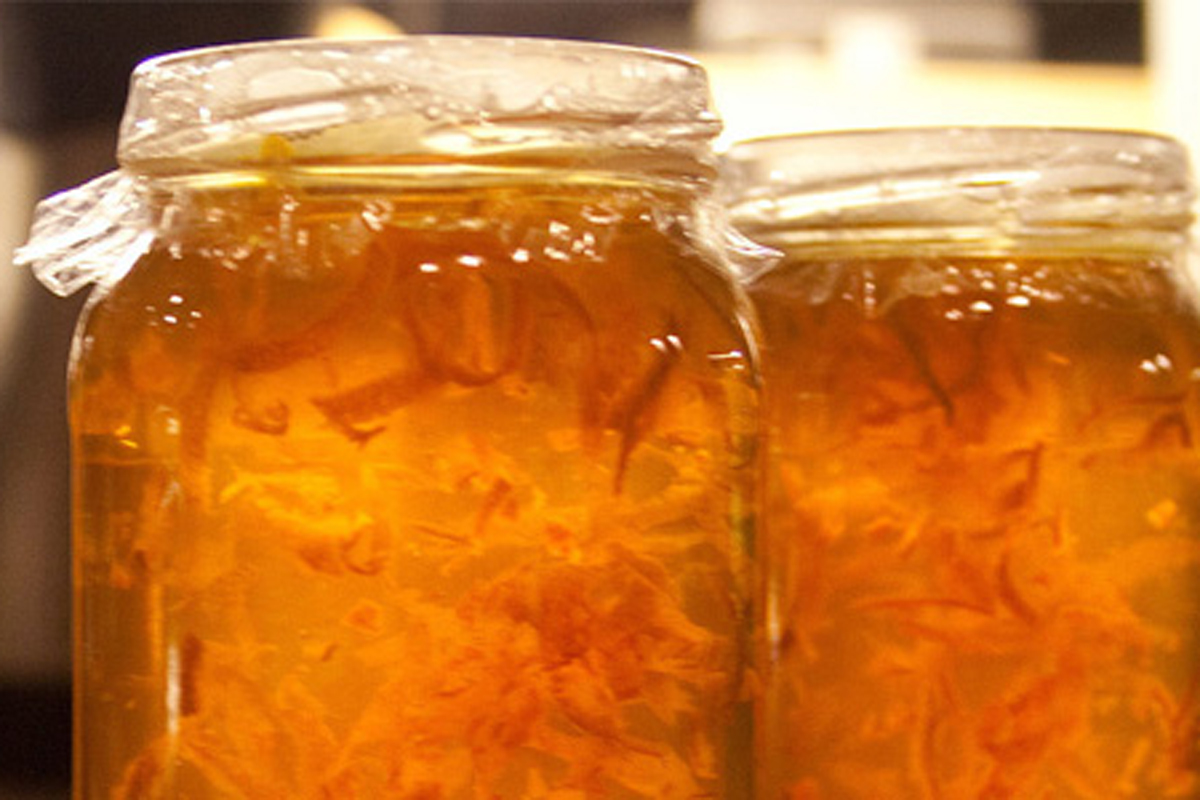UK marmalade competition spreads to Adelaide
Adelaide marmalade makers are being encouraged to enter the first Australian Marmalade Awards for the chance to have their recipe reproduced by Beerenberg and sold in luxury London department store Fortnum & Mason.

Home-made marmalade. Photo: Amanda Slater/Flickr
Inspired by The World’s Original Marmalade Awards, the Australian Marmalade Awards will comprise a cooking competition and festival celebrating all things marmalade, with the best marmalade producer offered the opportunity for commercial production of their recipe.
The Australian awards will be presented by the National Trust of South Australia in partnership with The World’s Original Marmalade Awards founder, Jane Hasell-McCosh.
Since 2005, the international awards have been held at Hasell-McCosh’s historic home (Dalemain Estate) in Cumbria, England, attracting large crowds and raising more than $200,000 for charity. The 2016 competition attracted more than 3000 entries.

A scene from the 2016 World’s Original Marmalade Awards at Dalemain Estate.
The Australian Marmalade Awards and festival will be held next month at one of South Australia’s most significant heritage properties, Beaumont House, on Glynburn Road.
“The story of marmalade is part of our social history and therefore worthy of promotion by the Trust,” says National Trust event manager Helen Cartmel.
“The funds received will go towards the heritage activities of the National Trust of South Australia, which independently looks after more than 100 properties and reserves in SA.”
Entries for the competition are divided into two divisions: “homemade” and “artisan”. The homemade competition is open to home cooks of all skill levels, while the artisan competition is limited to commercial marmalade producers who use the traditional “open-pan” method.
The two divisions are further divided into several categories including Australian Orange, Any Citrus, Marmalade with Additions, Native Fruits, Children’s, and First Timers.
Cartmel says the competition has sparked a large amount of interest.
“All sorts of people, from overseas to country SA, have inquired about the competition, including many home cooks interested in cooking with home-grown produce.
“All winners of each category will receive a certificate – gold, silver or bronze. The gold winner of each category will receive a specially engraved marmalade spoon, and the overall winner a silver marmalade pot.
“The overall winner of the competition will also receive the opportunity to have their recipe reproduced by Beerenberg commercially and sold in their shop and also overseas in Fortnum & Mason’s.
“For artisan producers, winning a prize in the competition can be used as a selling point for their produce.”
The festival will include presentations from citrus and marmalade experts, cooking demonstrations, tastings and sales of marmalade, food and wine stalls, and Devonshire teas.
“The festival will be a family day out which will appeal to a large range of people, not just marmalade enthusiasts,” Cartmel says.
The National Trust hopes it will become an annual event. “We’re planning to start off small, but we think this could become quite big.”
Entries for the Australian Marmalade Awards close on October 31, with the awards to be announced as part of the festival at Beaumont House on November 20.
If you don’t have your own marmalade recipe, but you would still like to give marmalade making a go, the World’s Original Marmalade Awards has shared one of its favourite recipes from “preserves queen” Pam Corbin (River Cottage Preserves Handbook), for Seville Orange Marmalade.
“The Seville orange, celebrated for its bitter tones and pectin rich flesh, makes the finest of marmalades,” Corbin writes.
Locally grown Seville oranges are in season and available now (try The Food Forest stall at the Adelaide Farmers’ Market).
“Don’t delay; buy them when you see them,” Corbin says. “Even if you are a marmalade novice, this is the perfect time to get out the preserving pan and pot up some winter sunshine.
“I like a medium to fine-cut marmalade with soft peel and rich amber tones; this is how I make mine.”

Pam Corbin’s Seville Orange Marmalade. Photo: Word’s Original Marmalade Awards
Pam Corbin’s Seville Orange Marmalade
Ingredients
1kg Seville oranges
Juice of 2 lemons (100mls)
2kg golden granulated sugar
Method
Scrub the oranges, remove the buttons at the top of the fruit then cut in half around their circumference. Squeeze out the juice and keep to one side.
Slice the fruits into the size pieces you prefer, removing any marked skin and any thick pieces of the white inner pith. Save these – the pith is where the most pectin is – and tie the off-cuts in a square of muslin.
Place the sliced peel, orange juice, and pith bag in a large bowl and cover with 2 litres of water. Cover and leave to soak overnight or for up to 24 hours – this helps to soften the peel and release the pectin.
Transfer the whole mixture to a large heavy-based pan or preserving pan. Cover and bring to the boil, then simmer for about 2 hours (Sevilles have tough old skins) or until the peel is tender and breaks when gently pulled – the contents of the pan will have reduced by approximately one-third. Remove the pith bag, first squeezing it firmly against the side of the pan to remove all its gummy goodness.
Add the lemon juice and the sugar. Bring the mixture to the boil, stirring until the sugar has dissolved. Boil rapidly until setting point is reached – this should take approximately 15 minutes at a full rolling boil but will depend on the size of pan you use and how hard the boil is. The marmalade is done when the mass of foamy bubbles on the surface has disappeared and the mixture appears to be thick and glossy.
Test for setting point by dropping of the mixture onto a very cold plate or a large stainless-steel spoon – after a minute or so it should form a slight skin on the surface. Avoid over-cooking, which results in a stiff overly sweet marmalade.
Remove from the heat and leave to cool for several minutes to allow the peel to evenly distribute – if you pour when the marmalade is too hot the peel will float to the top of the jar. Pour (to within 3mm of the top) into sterilised jars and seal immediately.
More information about the Australian Marmalade Awards and Festival, as well as competition entry forms and guidelines, can be found here.




